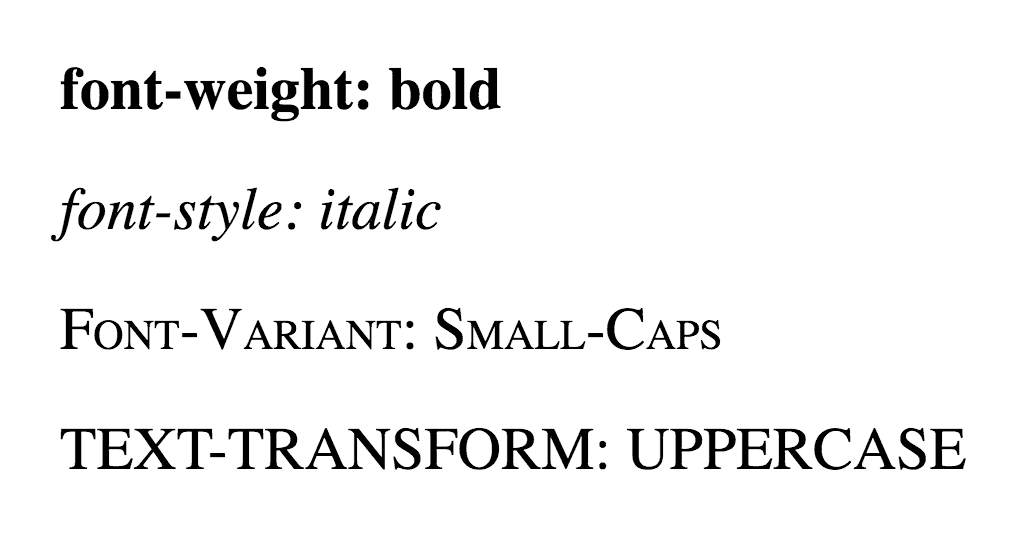

Note how in the second example it has been decided not to assign "Example2 ExtraBlack" to anything.

And assume six weights in the "Example2" family: Book, Medium, Bold, Heavy, Black, ExtraBlack. Assume four weights in the "Example1" family, from lightest to darkest: Regular, Medium, Bold, Heavy. The following two examples illustrate the process. If any of "300", "200" or "100" remains unassigned, it is assigned to the next lighter assigned keyword, if any, or the next darker otherwise.

If any of the values "600", "700", "800" or "900" remains unassigned, they are assigned to the same face as the next darker assigned keyword, if any, or the next lighter one otherwise. If "500" is unassigned, it will be assigned the same font as "400". If there are fewer then 9 weights in the family, the default algorithm for filling the "holes" is as follows. The font labeled "Bold" will often correspond to the weight value "700". If there is both a face labeled Medium and one labeled Book, Regular, Roman or Normal, then the Medium is normally assigned to the "500". OpenType does), the font weights should be mapped directly. If the font family already uses a numerical scale with nine values (like e.g. However, the following heuristics tell how the assignment is done in typical cases: The association of other weights within a family to the numerical weight values is intended only to preserve the ordering of darkness within that family. The weight name associated with that face will typically be Book, Regular, Roman, Normal or sometimes Medium. Usage across font families is quite variant for example a font that you might think of as being bold might be described as being Regular, Roman, Book, Medium, Semi- or DemiBold, Bold, or Black, depending on how black the "normal" face of the font is within the design.īecause there is no standard usage of names, the weight property values in CSS1 are given on a numerical scale in which the value "400" (or "normal") corresponds to the "normal" text face for that family. Their primary role is to distinguish faces of differing darkness within a single font family. There is no accepted, universal meaning to these weight names. Child elements inherit the resultant weight, not the keyword value.įonts (the font data) typically have one or more properties whose values are names that are descriptive of the "weight" of a font.


 0 kommentar(er)
0 kommentar(er)
